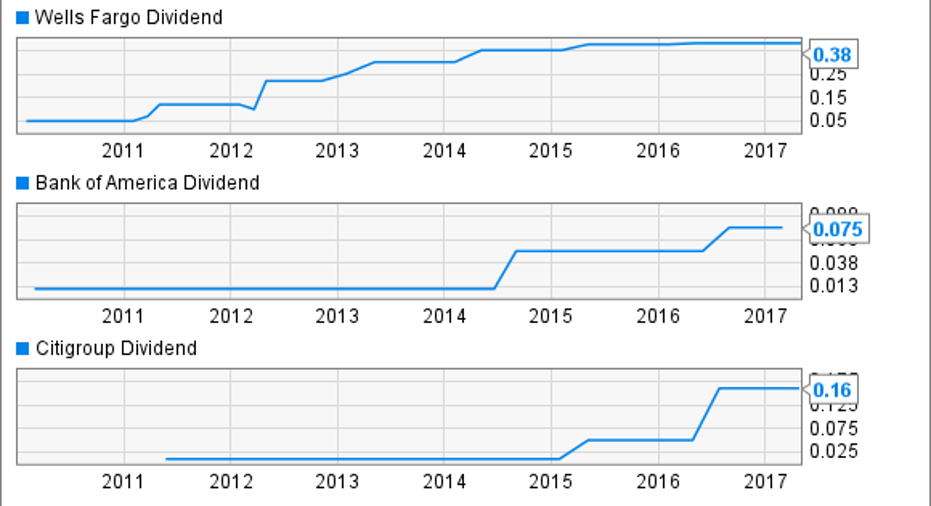Bank of America Could Soon Return More Than 100% of Its Earnings to Shareholders

Earlier this year, the now-former Federal Reserve governor in charge of regulatory matters, Daniel Tarullo, made a subtle but significant announcement that could free Bank of America (NYSE: BAC) and other big banks up to return more than 100% of their earnings to shareholders.
Since the financial crisis, the nation's biggest banks have had to ask for the Fed's permission to increase their dividends and stock buybacks. The regulator's newfound veto power over bank capital plans came as part of the Dodd-Frank Act of 2010, which significantly scaled up banks' compliance burdens.
The U.S. Federal Reserve Building at sunset. Image source: Getty Images.
The Fed could reject a bank for one of two reasons. First, on quantitative grounds, if the bank wasn't projected to have enough capital to remain well-capitalized through the most extreme version of the annual stress test. And second, on qualitative grounds, if the Fed concluded that a bank didn't have an adequately sophisticated capital planning process in place.
Few banks have problems with the quantitative aspect, as they can forecast relatively accurately the impact on their capital given the underlying stress test assumptions. It's the qualitative grounds that banks take issue with, as they're fuzzier and more subjective.
Wells Fargo's new CEO Tim Sloan made this point at an industry conference last year:
Bank of America's Chairman and CEO Brian Moynihan echoed these remarks at the same conference:
The good news for banks, in turn, is that this aspect of the test could soon go away. Former Fed governor Tarullo made this point on his way out the door earlier this year, suggesting that it may be time to end the qualitative part of the annual stress test.
And it seems safe to say that the people most likely to be selected by President Trump to fill the three open seats on the Fed's governing committee will agree, given his vow on the campaign trail to reduce regulations on banks and other financial service providers.
Of all the banks that would benefit from this change, few would welcome it as much as Bank of America. Its efforts to meaningfully increase the amount of capital it returns to shareholders have been throttled since the crisis in large part because of the qualitative portion of the stress tests.
Bank of America has increased its dividend only twice since the financial crisis, compared to annual raises at JPMorgan Chase and Wells Fargo. Image source:YCharts.com.
If that were to go away, it would enable the North Carolina-based bank to purge its balance sheet of an enormous surplus of pent-up capital, easily translating into a total payout ratio in excess of 100% beginning as early as next year.
10 stocks we like better than Bank of AmericaWhen investing geniuses David and Tom Gardner have a stock tip, it can pay to listen. After all, the newsletter they have run for over a decade, Motley Fool Stock Advisor, has tripled the market.*
David and Tom just revealed what they believe are the 10 best stocks for investors to buy right now...and Bank of America wasn't one of them! That's right -- they think these 10 stocks are even better buys.
Click here to learn about these picks!
*Stock Advisor returns as of May 1, 2017.
John Maxfield owns shares of Bank of America and Wells Fargo. The Motley Fool has no position in any of the stocks mentioned. The Motley Fool has a disclosure policy.